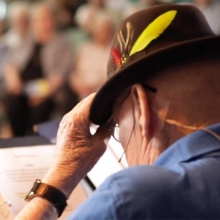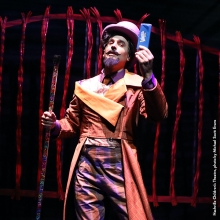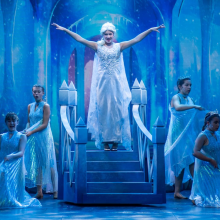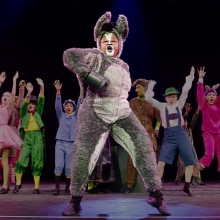Oliver Wallace

“Ollie was a madman,” animator and Disney Legend Frank Thomas once observed, “funny, eccentric, noisy, unexpected—and loved by everyone.” This combination of traits seems to have fated Oliver Wallace to a varied and unconventional career creating music for The Walt Disney Studios.
Born in London, England on August 6, 1887, Oliver studied widely, in subject and geography: “Under La Gourg of the Chicago School of Music, counterpart and harmony with Bresha in San Francisco, piano with Louis Diamond Professor Cottohn of London, MacDonald Hope of Los Angeles,” according to an early Studio biography.
After relocating to Canada from England in 1904, Oliver moved to the United States, becoming a citizen in 1914. He is frequently cited as the first musician to use a pipe organ to accompany motion pictures (in Seattle, Washington in 1910), later becoming house organist for the prestigious Granada Theatre in San Francisco and then Sid Grauman’s Rialto Theatre in Los Angeles.
Oliver’s work experience gave him a background uniquely suited to the varied and unusual music he created for Disney: “I began acquiring that art when I got my first job playing for vaudeville and single reels in 1906,” Oliver recalled in 1954. “Believe me, you had to be snappy with your invention to keep up with the shadows in those early flickers.”
“He was primarily an improving musician with a great sense of music, and from his years of playing organ to silent movies he was able to match music to any piece of action,”
Thomas further recalled. “He was caustic, satiric, looked like a little Bantam Rooster, and never let anyone get the best of him.”
Oliver also noted that he had an allegorical drama published in book form, as well as numerous poems, and more than two dozen songs and compositions, including the 1918 hit Hindustan. He worked in the Music Departments of Columbia and Universal Studios (his pipe organ prowess can be heard in the Franz Waxman score of the 1935 horror classic The Bride of Frankenstein) before coming to Disney in 1936.
In his years with Disney, Oliver proudly estimated that he had written more than 30 miles of soundtrack. He was musical director for the Academy Award®-winning score for Dumbo, as well as for Cinderella, Alice in Wonderland,Peter Pan, and Lady and the Tramp.
Animation music historian Ross Care also noted of Oliver’s prolific short cartoon music, “His scores for the Donald Duck and Mickey Mouse shorts… collectively provide a virtual, though still largely unread, textbook in animation scoring.”
Oliver contributed music to a number of notable songs, including “When I See an Elephant Fly,” “Pink Elephants on Parade,” and “Der Fuehrer’s Face,” for which he also wrote the lyrics. He scored entries in the award-winning People and Places and True-Life Adventures series and the Disneyland television program, for which he was Emmy®-nominated in 1957.
Wallace’s feature film scores included Darby O’Gill and the Little People, Ten Who Dared, and The Incredible Journey; he accrued five Academy Award nominations during his career.
He was married to Claire Burch Wallace, a musician herself, and formerly of the University of Washington’s music faculty. The couple had two daughters, Martha and Mary. Wallace was working at Disney until his death on September 15, 1963.





